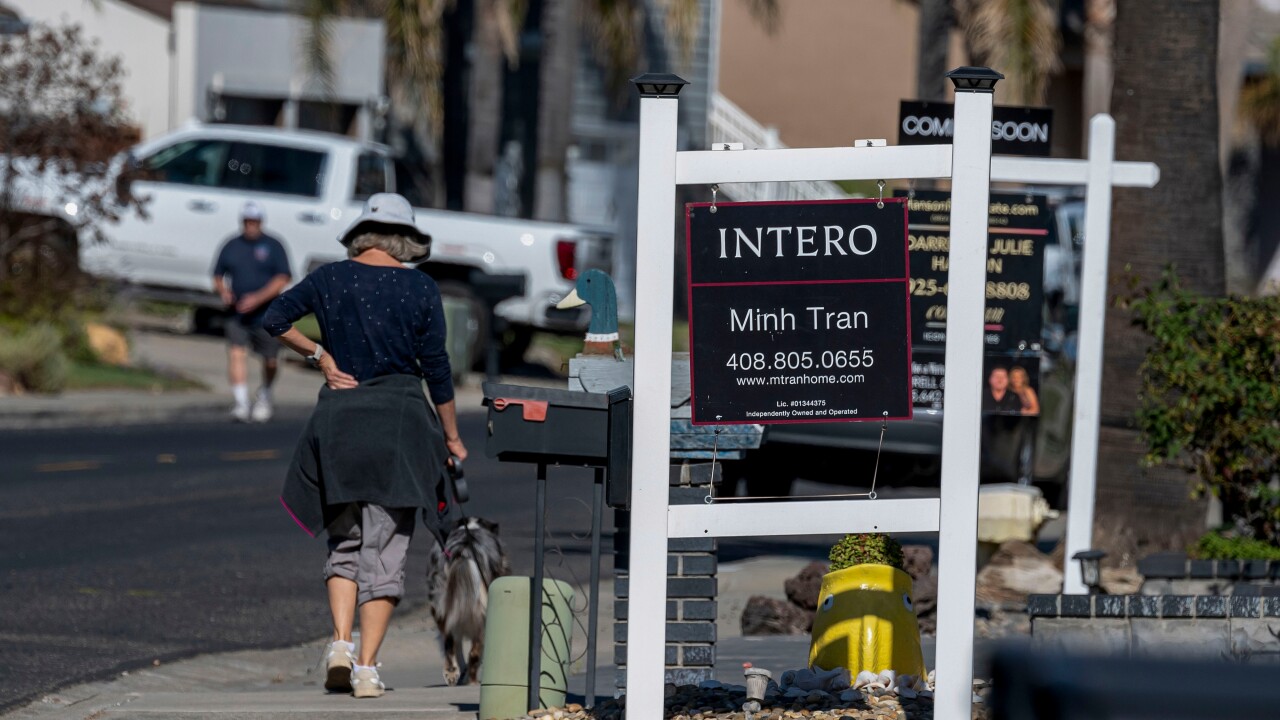
Elliot Salzman, an executive at the $76 billion-asset BBVA Compass, belongs to a small club of lenders: those willing to take a chance on making home loans to risky borrowers.
Banks desperately want to extend credit to the self-employed or those with less-than-stellar credit, in part to make up for
The problem is that the Dodd-Frank Act requires lenders to verify borrowers' ability to repay the principal and interest on nonqualified loans over the long term, but it leaves them with a lot of discretion — or enough rope to hang themselves, depending on one's perspective. Most lenders
"You want to keep it consistent across the board" and use something that resembles an existing industry standard, Salzman said. "If you're comfortable that you've met 'ability to repay,' you don't have concerns."
The rule is a crucial provision of the Dodd-Frank Act that requires lenders to verify a borrower's income based on eight underwriting factors. Lenders originating so-called "non-QM" loans face stiff penalties if they fail to properly verify borrowers' wherewithal to meet their obligations.
Non-QM loans carry no legal protections for lenders, but they offer fatter profit margins since lenders can charge more for them.
Alan Lane, the president and chief executive of the $734 million-asset Silvergate Bank, in La Jolla, Calif., said many lenders have avoided non-QM lending because of the regulatory uncertainty. Making loans to borrowers outside the traditional credit box is expensive. And there is no automated system to rubber-stamp the outcome lenders want, which is a safeguard from lawsuits.
"It doesn't lend itself to a cookie-cutter approach," Lane said. "[Ability to repay] is where we're all trying to live and figure out, and there isn't a lot of guidance. There's uncertainty about the return, the interest rate risk and the costs."
Silvergate is originating between $5 million to $10 million of non-QM loans a month, Lane said. Most are five-year adjustable rate mortgages, which have some short-term risk for banks in a rising-rate environment.
Salzman's strategy at BBVA Compass, a Birmingham, Ala., unit of Spain's Banco Bilbao Vizcaya Argentaria, is to use a residual income test to vet the ability to repay. The test ensures a borrower has enough cash to live on after paying their mortgage and other major bills. He and others are borrowing that guideline from the Department of Veterans Affairs, which credits the test for its low delinquency rates.
"We think residual income takes care of the ability to repay," said Salzman, who is BBVA's director of consumer policy and underwriting.
Secondary-Market Concerns
For now, less than 10% of BBVA Compass' mortgage business is non-QM. Salzman said he expects to hold the loans on balance sheet for two years to let them "season" and ensure fewer defaults, before selling them to investors.
That strategy gives Salzman an advantage over nonbank mortgage lenders, whose business model does not allow them to hold loans for a couple years like a bank.
"It seems like it's been banks more willing to do non-QM because they are putting them on balance sheet and mortgage bankers have to have a buyer," Lane said. "Mortgage bankers are not doing as much as they would like because they have to find someone willing to buy the loans."
Many industry experts say mortgage rates need to be priced higher for riskier loans. For now, typical non-QM borrowers have high FICO scores and low loan-to-value ratios.
"These are pretty solid loans so the rate being charged is fair, but there's not enough volume to get the secondary market interested," Lane said.
Other Obstacles
Verifying income is a challenge especially for self-employed borrowers who typically lowball their income on tax returns but then need to prove they have significant income to get a home loan. Lenders usually must delve into a borrower's bank statements going back two years.
At a minimum, lenders have to determine a borrower's income or assets, employment, all monthly loan payments, mortgage-related debt and other debt such as alimony or child support. Lenders also have to take into account a borrower's debt-to-income ratio or residual income, and overall credit history.
Bill Ashmore, the president of Impac Mortgage, a correspondent lender in Irvine, Calif., said the two biggest hurdles for non-QM lending are training and automation. Impac has created an automated underwriting engine to pre-qualify borrowers for non-QM loans.
Moreover, the company is working on a product for borrowers who have plenty of assets but perhaps not enough income.
"If you have a 75-year-old borrower with $2 million in the bank, he's receiving dividends and interest but he can't qualify for a loan," Ashmore said. "We think we can do this program where we show the ability to repay with the assets."
In July, Impac announced that it would originate four non-QM products — for the self-employed, for jumbo borrowers and for real estate investors — all with Fico scores above 680. Impac plans to sell the loans to Sydney-based Macquarie Group, which will hold the loans in portfolio and eventually securitize them.
A key issue going forward is whether mortgage lenders have measured the risk particularly for compliance and underwriting. Because there are few, if any, automated underwriting engines, the loans are not touched just once, but many times, which adds to the cost.
Some lenders believe non-QM lending will reach anywhere from $50 billion to $80 billion annually.
"Someone out there is going to say they will gobble up the non-QM loans, but they have to have a standard of how to meet the ability-to-repay rules," Salzman said. "It's going to be just another product, like stated income was, and they are going to put criteria around it and securitize it."





